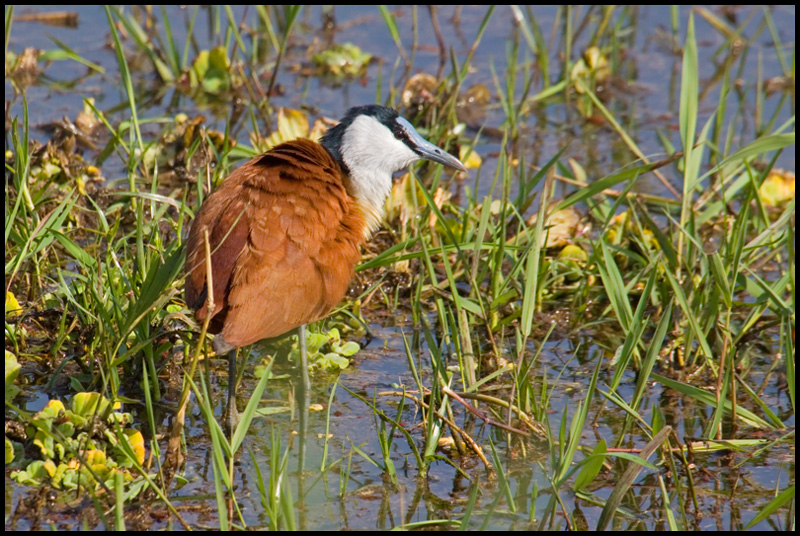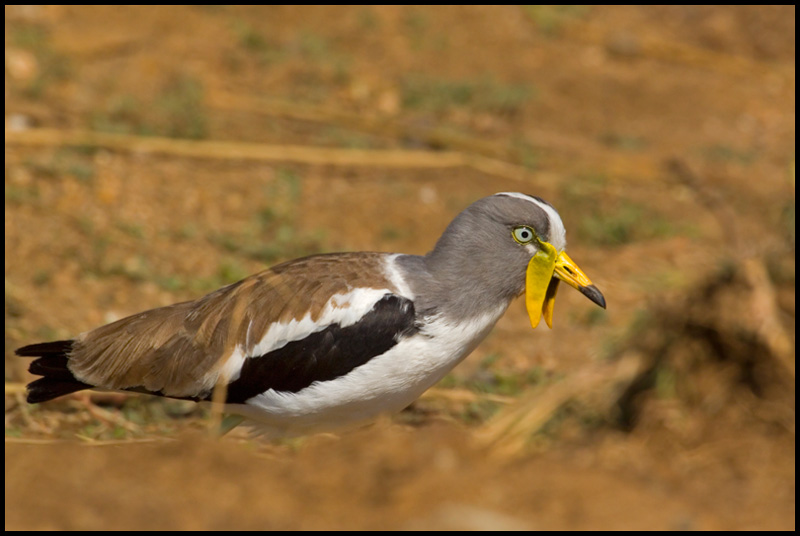Etapas del viaje / Trip sections:
Nuestro segundo día en Kruger iba a transcurrir entre Crocodile Bridge Gate y el campo de Skukuza, donde teníamos alojamiento esa noche. Nuestro trayecto nos llevaba a pasar Lower Sabie, uno de los mejores sitios del parque para alojarse, al tener unas vistas preciosas del río Sabie (que sí llevaba agua) y de los animales que a él acudían a beber. Desgraciadamente en Lower Sabie no conseguimos habitación, por lo que tuvimos que ir al más masificado Skukuza, desde el que hicimos una salida nocturna.
Our second day in Kruger was going to take place between Crocodile Bridge Gate and the Skukuza camp, where we had accommodation that night. Our journey led us to pass through Lower Sabie, one of the best places in the park to stay, having beautiful views of the Sabie River (which had water) and the animals that came to drink on it. Unfortunately we did not get a room in Lower Sabie, so we had to go to the more crowded Skukuza, from which we made a night drive.
La crónica completa del viaje en eBird, incluyendo el mapa y la lista de aves observadas, se puede obtener pinchando en este enlace.
The complete eBird trip report, including map and the list of bird species can be seen in this link.
South Africa map. Location 15 corresponds to Kruger National Park.
Como se ve en el mapa inferior, comenzábamos a adentrarnos en el corazón del parque. La zona sur, por la que empezábamos, parece ser que es la mejor para ver grandes felinos.
As seen in the map below, we began to drive to the heart of the park. This southern area is the best to see big cats.
Kruger National Park map and area explored on August 19th, 2019.
Ibamos a recorrer principalmente las carreteras H4-2, entre Crocodile Bridge y Lower Sabie, y la H4-1 entre este último y Skukuza, añadiendo el Mlondozi Loop al norte de Lower Sabie. Este recorrido, con las correspondientes paradas, nos iba a llevar todo el día.
We were going to travel mainly through the H4-2 road, between Crocodile Bridge and Lower Sabie, and the H4-1 between the latter and Skukuza, adding the Mlondozi Loop, located north to Lower Sabie. This route, with the corresponding stops, was going to take us all the journey.
Route on August 19th, 2019.
En el río Sabie, ya cerca del campamento del mismo nombre, había una gran diversidad, incluyendo abundantes cocodrilos, jacanas, tántalos, picotenazas e hipopótamos.
On the Sabie river, near the camp of the same name, there was a great diversity, including abundant crocodiles, jacanas, yellow-billed storks, openbills and hippos.
Al lado del campamento Lower Sabie es interesante parar en la Sunset Dam, una pequeña balsa con abundantes especies, incluyendo avefría coroniblanca y avemartillo.
Near the Lower Sabie Camp is interesting to do an stop at the Sunset Dam, an small pond with several species, including white-headed lapwing or hamerkop.
Pasado Lower Sabie, algunas manadas de elefantes parecían esconderse entre la vegetación. Quizás lo hacían de un par de leonas que caminaban tan tranquilamente por la carretera.
Past Lower Sabie, some herds of elephants seemed to hide among the vegetation. Maybe they did due to a pair of lionesses that were walking on the road.
El Mlondozi Loop deparó buenas observaciones de aves carroñeras, muy cercanas al camino. Bajo el Mlondozi Rest Site teóricamente debía haber una gran balsa a la que acuden los animales a beber. Sin embargo, la presa estaba prácticamente seca, y sólo había un solitario elefante bebiendo de un abrevadero. Que diferente de otras imágenes que se pueden ver por internet. En el punto de descanso algún reptil y un solitario roquero imitador.
The Mlondozi Loop provided good observations of vultures, situated very close to the road. Below the Mlondozi Rest Site, there is a dam in which animals go to drink. However, the dam was virtually dried and there was only a solitary elephant drinking from a watering hole. What different image from others seen on the internet. At the resting point some reptiles and a lonely mocking cliff-chat.
Y más cerca de Skukuza apareció un nuevo león, tumbado en una isla en el río, y escondido entre las ramas de un árbol, nuestro primer leopardo. No pude fotografiarle de cara, pero ahí queda una imagen testimonial.
And near Skukuza a new lion appeared, resting on an island in the river. Also, hidden in a tree, our first leopard. I could not photograph its face, but here you can see a testimonial image.
Por la noche hicimos una salida nocturna desde Skukuza. La verdad es que añadimos poca cosa más. Una gineta de manchas grandes y una liebre roja de Natal como novedades. Además elefantes, impalas y una manada compuesta por 7 leonas saliendo de caza.
We did a night drive from Skukuza. We were not very lucky and only added a rusty-spotted genet and a Natal red rock hare as new species. In addition, elephants, impalas, and a group of 7 lionesses going to hunt.
La lista completa de especies observadas en la ruta entre Crocodile Bridge Camp, Lower Sabie y Skukuza (49 especies de aves, 20 de mamíferos y una de reptiles) y su localización puede encontrarse en este enlace.
The complete list of species observed between Crocodile Bridge Camp, Lower Sabie and Skukuza (49 bird species, 20 of mammals, 1 of reptiles) and its location can be seen in this link.









































